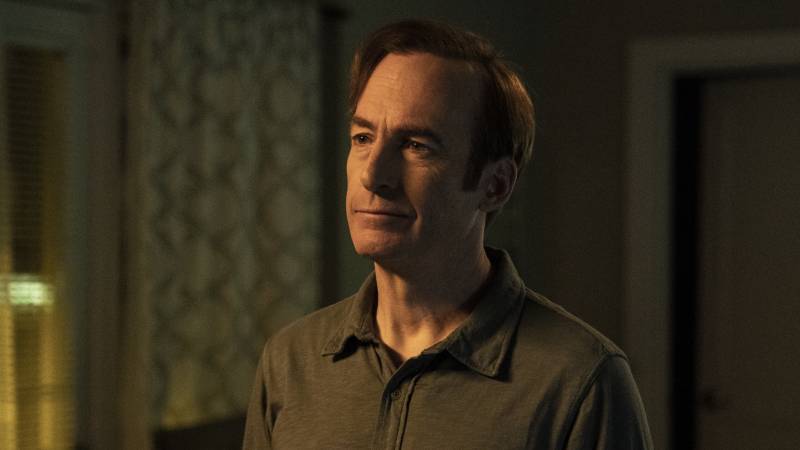But Gilligan and Gould weren’t done pulling inspiration from Breaking Bad. The short black-and-white scenes showing Saul’s current fate have the character adopting yet another name, and about to return to Albuquerque after hiding undercover in Nebraska. That may seem random, but in Saul’s last conversation with Walter on Breaking Bad, Saul rejected Walter’s demand to continue working as his lawyer by saying his goal was to become “Mr. Low Profile,” who, in the “best case scenario,” might wind up managing a Cinnabon in Omaha.
Nothing from Breaking Bad, though, is as surprisingly precise as an early indicator of what Better Call Saul would become as another scene from the episode introducing Saul. Walter and his meth-producing partner, Jesse (Aaron Paul), are upset that Saul won’t do what they’ve asked him to do. So they dig a grave-sized hole in the desert, put on ski masks and abduct Saul, covering his head with a hood. As they tie his hands behind his back, drive him to the desert and drop him to his knees at gunpoint, Saul assumes they’ve been sent by someone named Lalo.
That’s the only mention of Lalo in Breaking Bad, but clearly, from Saul’s perspective, he’s someone really to be feared. That’s why it’s so astounding that, in the most recent episodes of Better Call Saul, the most menacing and deadly character has been none other than that same Lalo, played by Tony Dalton. The most recent episode of Better Call Saul, back in May, had Lalo kill a major character so brutally and shockingly that I still haven’t forgotten it.
What happens now? I have no idea, and AMC sent out no episodes to preview. We do know that, for these final episodes, Carol Burnett appears as a newly introduced character, which is really intriguing. And we know that the fate of Seehorn’s Kim, whatever it is, will be drastic enough to keep her from making even a single appearance in Breaking Bad, and will complete Jimmy’s transformation into the totally amoral Saul Goodman. It’s how Gilligan, Gould and company connect the dots between those new sets of Point A and Point B that will determine just how great a show Better Call Saul ends up being. The devil is in the details. And on this show, so is the brilliance.
Copyright 2022 Fresh Air. To see more, visit Fresh Air.9(MDAxOTAwOTE4MDEyMTkxMDAzNjczZDljZA004))

9(MDAxOTAwOTE4MDEyMTkxMDAzNjczZDljZA004))

